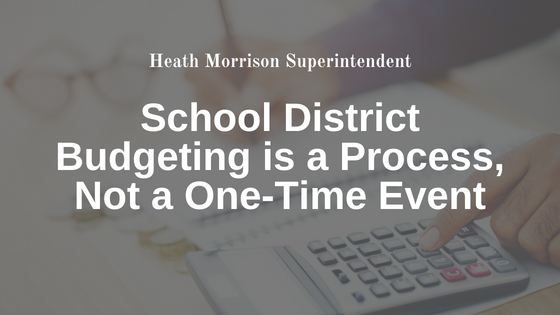Each spring, school districts begin gearing up for one of their most important obligations: developing their budget for the next school year. Budgets play a critical role in the planning, control and evaluation of school district operations. The adoption of a budget represents a set of decisions made by school board members and district leaders which culminate in matching a school district’s funding sources with its spending priorities. Transparency and collaboration with district teachers, staff and parents are critical components of this process.
Below are some best practices to assist district leaders as they move through the annual budget development process:
Engage district leadership – This is a critical first step in the process. Including campus principals and other district leaders in the early phases of the development process results in a budget that is well-integrated with the goals of the school district that will inform financial and program decisions, leading to improved operations and better learning outcomes for students. Making district leaders part of the budget development process gives them ownership and provides a vital communication link for input from campus and department employees, who often feel far-removed from the process.
Seek community input – The district should consider hosting a series of budget town hall meetings to outline the budget development process and explain how the district receives funding and how those funds are allocated. It is helpful in this town hall setting to liken a school district’s budget to a household budget, where a family must consider their income against how much they can spend, prioritizing what they are required to have, what they want to have, and what they would love to have. Giving community members the opportunity to participate in the budget development process provides valuable insight to the complex task of allocating district resources and the difficult decisions that ultimately impact each student andemployee. It also helps district leaders build trust when community members are encouraged to share ideas to improve district efficiency and instructional opportunities for students.
Keep board members involved – Trustees bear the responsibility of adopting the official budget for the upcoming school year, but it is critical that they are part of the process from the beginning. Budget development is an ongoing process, not an event. Ideally, budget planning should begin long before the final budget is adopted, providing trustees ample opportunity to review and ask questions about compensation data, revenue estimates, enrollment projections and staffing needs for the coming year. Remember to provide your board members clear, specific and accurate talking points so they are empowered to give the public insight into budgeting process.
Transparency is key – Due to a rapidly changing economy, volatile state funding, and rising operational costs, school districts are continually challenged to do more with less. It is important for stakeholders to understand the finite nature of federal, state and local funding, and how those sources determine what the district is able to offer in terms of staff compensation and educational programs for students. The budget development process should give stakeholders an opportunity to weigh in on spending priorities and identify potential cost savings to offset funding shortfalls.
A school district’s budget is an important tool used to deliver on the educational expectations of the community. A thoughtful budget development process, supported by a well-defined timeline and clearly articulated district goals allows school districts to plan future operations in a manner that best serves the needs of students.

